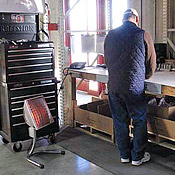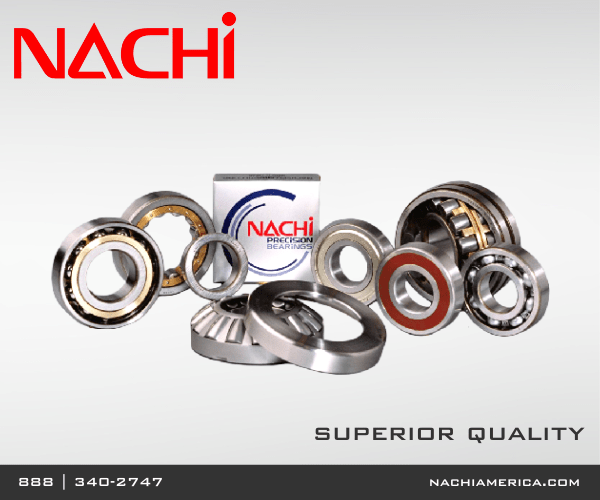

Focus heat where you want it with the only true infrared spot heater on the market. The HotZoneTM heater features a high intensity infrared source and the patented lobster-eye IRLensTM, which focuses 3 to 5 times more infrared energy into the center of the beam than heaters without a lense. This revolutionary design makes HotZoneTM the most energy-efficient infrared heater on the market today.
Full Heat in Three Minutes
Wind does not affect radiant heat. HotZoneTM increases the temperature by 15° where you want it and when you want it, so people feel comfortable without increasing the air temperature in the entire building. Raise employee productivity and lower heating costs today!
Deliver Heat From A Distance
Because HotZoneTM heaters focus and direct the infrared energy into a beam:
- Heaters can be installed out of the way of people and equipment.
- The radiant intensity is much less sensitive to distance from the heater (your head doesn’t cook while your feet freeze).
- Heaters deliver between three and five times as much infrared energy to the spot, compared to a similar powered, unfocused high intensity heater.
- Heaters will raise the apparent temperature of a 25 square foot area by 20° with a single 3kW heater mounted 10 feet above the target.
Thermal comfort solutions using Schaefer’s HotZoneTM heaters and appropriate heater controls:
- Can reduce the energy cost for the same thermal comfort level (apparent temperature) by 30% to 50%.
- Earns points towards your building’s LEED Certification.
- Are easy and cost effective to implement in new or existing facilities.
- Can compensate for the thermal comfort deficiencies of the central heating system when no other heating technology can.
Be Green. Make Green.
Implementing a spot heating solution with HotZone heaters c ompensate for central heating deficiencies. They also h elp you earn points towards LEED Certification. HotZone heaters a llow you to decrease overall building temperature and cut heating bills by 30% to 50%. Often, impelementing HotZone heaters show a return on investment of 12 months or less.
HotZone Applications
The following are just a few of the applications for HotZone heaters to keep people warm and comfortable:
- Commercial/Industrial
- Hospitality
- Public/Government
- Greenhouse
- Agriculture
- Sports/Recreation
Radiant spot heating solutions heat the person or the object with absorbed radiant energy and are the ideal solution when:
- There is a large volume of air per person (ex. in warehouses, hangars and factories).
- There is high required or inadvertent air exchange (ex. in stores, factories, loading docks and outside).
- There is little or no insulation (ex. in warehouses, factories, hangars and outdoors).
- People or equipment need to be heated and contact heating or raising the ambient air temperature is not an option.
Products
Electric HotZoneTM heaters are low to medium power, high intensity infrared spot heaters that are typically used to heat small indoor or outdoor spaces. They are used individually to heat a roughly circular (or square) area or in groups to heat arbitrarily large spaces of any shape. Electric heaters have the distinct advantage over gas heaters of having adjustable output power levels (can be dimmed).
Gas HotZoneTM heaters are high power, high intensity infrared spot heaters that are typically used to heat large indoor spaces.
Infrared Heating Basics
Heating People, Not Air
Human thermal comfort is a function of ambient air temperature and humidity, the cooling effect of air movement and the amount of infrared, or radiant, energy shining on and being absorbed by your skin and clothes.
When the sun emerges from behind a cloud, you immediately feel warmer due to the increase in radiant energy received from the sun, although there is little or no change in the surrounding ambient air temperature. This is because radiant energy, which travels at the speed of light, elevates the temperature of solid objects when it is absorbed, but does not heat the air through which it travels.
Humans at rest tend to be comfortable at around 70°F or 22°C. When the temperature drops, we put on more clothes, get more active or turn up the heat.
Turning up the heat often means heating the air that surrounds us with some sort of central or in-space (local) convective heater. Air passing or being forced over a warm element or a pipe filled with warm water or hot combustion products absorbs the element’s heat and becomes warmer.
Turning up the heat can also mean increasing the amount of radiant energy shining on you and the objects around you. There is a broad range of surface radiant heaters (floor, ceiling and wall; electric, hot water and gas) and reflector focused radiant heaters (low intensity (temperature) tube gas heaters and high intensity (temperature) gas and electric heaters.)
In many situations radiant, in-space (local) heaters are dramatically more energy efficient than any other heating choice. The energy efficiency stems from several factors:
- Central heating systems are designed to get the whole building to 70°F, even when much of the building may be unoccupied. In-space (local) heaters, of any type, equipped with proper controls only heat the parts of the building that need heat, allowing most of the building to operate at lower temperatures and with lower heat losses.
- Because you feel warmer with radiant energy shining on you, you can feel warm despite ambient temperatures lower than 70°F by as much as 15°F to 20°F. As heat losses from a structure increase in proportion to the difference between inside and outside air temperature, heat losses are reduced by 50% when the inside temperature is lowered to 55°F and the outside temperature is 40½F.
In situations where there is poor or no insulation (factories, warehouses, outside) and high air exchange (factories, warehouses, stores, outside) the heat losses are huge, and therefore so are the savings with radiant heat.
If you would like to find out how your operation could benefit from radiant heat applications, please contact your IBT Sales Representative or contact IBT for more information.





